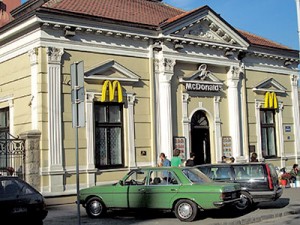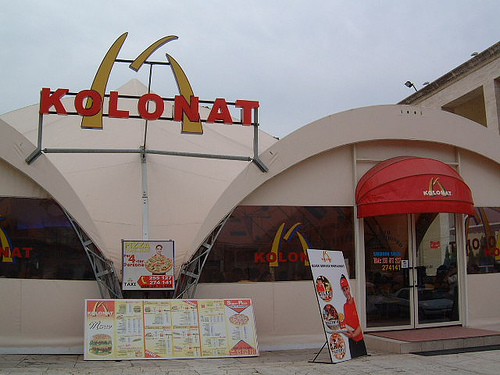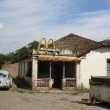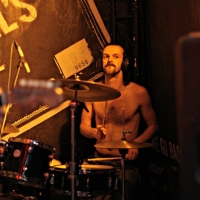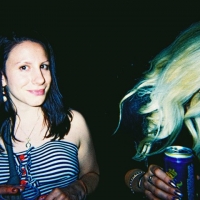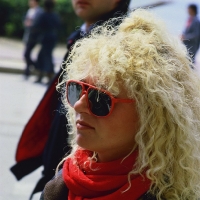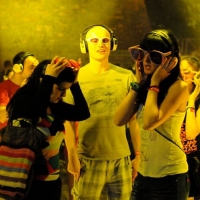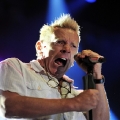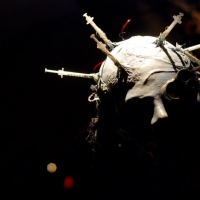From a source of national pride to a symbol of US imperialism, the American fast food chain has left its mark in the Balkans
In March of 1988, Belgrade, Yugoslavia became the first city in the communist world to open a McDonald’s restaurant. American newspapers at the time (still steeped in quaint Cold War clichés) ran headlines like “First Big Mac Attack Against Communism!” and “McMarxism?” Nearly half a century after two brothers named Mac n’ Dick opened the first McDonald’s restaurant in California’s Inland Empire, “Mickey D’s” received a heroes’ welcome in communist Yugoslavia. With lines wrapped around the block and police forces brought in for crowd control, the opening of the first McDonald’s in Eastern Europe was by all accounts the most successful restaurant launch in Belgrade history: 6,000 people were served on opening day, setting a new record for Europe.
And thus began the long, deeply conflicted relationship between McDonald’s and the people of Belgrade.
Despite a successful launch, opening a McDonald’s in a communist country wasn’t without its challenges. For one, currencies from Eastern Europe, including the Yugoslav dinar, couldn’t be converted into dollars.
This meant that the Yugoslav McDonald’s pretty much operated on the barter system. Profits from the Belgrade franchise were transferred to the McDonald’s corporation not in cash but in Yugoslav food, which the company used to stock its restaurants in Western Europe. During the sanctions in the 1990s, this early civilization barter model evolved into the black market model of physically dragging sacks of hard currency across the border. Only after the year 2000 were international bank transfers permitted in Serbia.
A second challenge was the serious lack of “McDonald’s quality” food supplies on hand. While meat was easily found in the usual Balkan abundance, it proved much more difficult to perfect the recipe for McDonald’s ketchup. As Gara Stevanovic, purchasing director for McDonald’s said at the time, “We have tomato paste, tomato puree, tomato sauce, but nothing on the market like tomato ketchup.” They must have gotten the recipe right eventually because nowadays Serbs like to drench their food –including pizza and pasta- in obscene amounts of the condiment, much to the horror of foreign onlookers.
There were also some early cultural barriers. In 1988, the concept of “American-style fast food” hadn’t permeated Yugoslav society. After a meal, even at McDonald’s, people liked to sit, smoke and complain about corrupt government officials for several hours – a time-honored tradition that continues to this day. Americans, on the other hand, call that kind of activity “loitering”, which is a criminal offense. In order to prevent too much post-Happy Meal lingering, McDonald’s hired several specially trained employees whose only job was to make people eat and leave.
As the franchise spread throughout Eastern Europe, having a McDonald’s became a source of national pride. Some of the earliest manifestations of the mounting tensions between Croatia and Serbia were evident in songs about McDonald’s Serbs sang at football matches. Some late-1980s chats went “we have a McDonald’s, McDonald’s, McDonald’s, we have a McDonald’s, and where is yours?” Another chant (which rhymed in Serbo-Croatian) referenced the hometown of Croatian football club Hajduk: “Hamburger, cheeseburger, ketchup and fries, we have a McDonald’s and Split doesn’t!” Of course, there were other more inappropriate variations.
Croatia did eventually get its own McDonald’s, but only after the dissolution of Yugoslavia, in 1996. Sarajevo finally got a McDonald’s last year. Elsewhere in the region, only Kosovo and Albania are without official McDonald’s restaurants, though both are awash in imitations. Albania’s Kolonat chain, which has a very McDonald’s-inspired logo, now offers table service.
Since the beginning and continuing to this day, McDonald’s restaurants in the Balkans have improved on the original American model in other ways. While in the 1980s, every American McDonald’s pretty much looked the same (bad neon lighting, red and yellow plastic everything), operators of the first Belgrade restaurant actually put some thought into its interior design. The McDonald’s in Slavija square was designed to reflect a rustic, Provencal French style, and had pastel upholstery, amber-colored tables and floors, “discreet illumination”, and modern art on the walls. Some early visitors remarked that it was the best looking restaurant in the city.
And in Romania, shit got even cooler. Understanding that most families live in small apartments and lack the space to host a birthday party for a class full of kids, some McDonald’s have recently painted and converted abandoned trams cars into party venues. Inside, kids can do karaoke and drink non-alcoholic champagne while their parents order beer with table service.
Despite Belgrade’s early euphoria about the arrival of their own McDonald’s, a decade later, some of the city’s hooligans demonstrated their anger with American foreign policy by attacking the franchise. During the first days of the 1999 NATO bombing campaign, McDonald’s main store was attacked and badly damaged by an angry mob. Franchise owners responded by producing posters and lapel buttons showing the golden arches topped with a traditional Serbian cap called the sajkaca. They also converted the lower-floor seating area of one McDonald’s restaurant into a bomb shelter.
Less than a decade later, following Kosovo’s declaration of independence in 2008, angry mobs set fire to the McDonald’s in Slavija square, the first in Eastern Europe. And during the 2010 Pride Parade, hooligans attacked the restaurant again. Despite these bouts of destruction, a plaque on the exterior of the building now proudly proclaims it the site of “the first McDonald’s in Belgrade”.
According to the McDonald’s theory of war (also called the “McPeace theory”), no two countries with McDonald’s restaurants will ever go to war against each other. The logic goes that countries with McDonald’s will have achieved a level of global economic integration and prosperity to make war seem unappealingly risky. The opening of a McDonald’s in a country can also signify a certain degree of economic stability that can encourage further foreign investments. And despite the multiple criticisms aimed at McDonald’s from everyone from food snobs to critics of globalization and free markets, 75% of new McDonald’s franchises are opened by local men and women, and can lead to the creation of thousands of new jobs.
Given the current political and economic climate, it would probably be best for Pristina and Kosovska Mitrovica to open McDonald’s restaurants as soon as possible. As one headline in the Russian tabloid Pravda read a bit hyperbolically, “McDonald’s to make Kosovo land of peace and happiness, US officials believe.”


